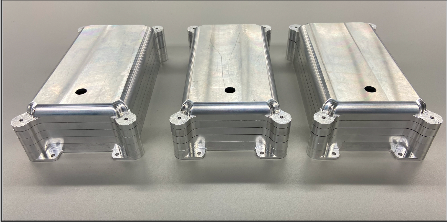A group of Texas A&M mechanical engineering seniors played a vital role in the entrepreneurial aspect of space flight.
Space Crystals LLC, a Houston-based company, allows patrons to infuse their DNA into synthetic amethysts. The crystalline structure is then launched into space, where the structure flourishes into two unique gemstones. One crystal is sent back to the customer to be displayed or made into jewelry, while the other is transported to the Lunar Lander company to travel to a more permanent location on the surface of the moon. The sister crystal can be accompanied by one gigabyte of personal data on an SD card, to be immortalized in space.
The desire to immortalize a piece of humanity in space can be attributed to founder Kevin Heath’s desire to “give people an opportunity to celebrate their lives forever.” Heath claims this innovative project was sparked by a visit to Austria after visiting musician Ludwig van Beethoven’s grave and seeing the efforts it took to maintain it.
“They had to maintain it every year, they had to keep it looking pretty, but others were starting to deteriorate,” Heath said.
Heath said sending snippets of ourselves to space was the solution to our finiteness. In order to successfully send these DNA-infused crystals to space, he needed a method of containment that would allow for safekeeping of the minerals.
“Whatever we do on Earth is finite,” Heath said. “The environment is going to destroy whatever you try to build on the planet.”
Coincidentally, mechanical engineering seniors were preparing to begin their long-anticipated Capstone project. The project requires students to take textbook practices and apply them to the real world—enabling them to truly become engineers and better prepare them for the workforce.
Mechanical engineering seniors Nathaniel Bass, Jason Bondi, Tara Brown, Tyler Haygood and Matthew Plummer formed the Eclipse Team and rose to solve the challenge posed by Heath.
Heath’s specific project requirements included the need to fit 556 0.4 inch cubic crystals, a memory storage unit for the SD chips, shields from a lunar environment and the ability to withstand initial launch and final landing. Additionally, the container needed to be able to remain on the surface of the moon indefinitely.
The Eclipse Team created a metal and composite box. An inner carbon fiber box was designed to store a maximum of 556 crystals and two memory storage devices. A thick aerogel insulation coats the carbon fiber box to provide thermal insulation from the subzero temperatures in space.
The Eclipse Team reports they spent about 20 hours a week in the lab, outside of allocated time, to perfect their product.
“We wanted to make something that was worth making and that takes time,” Bass said.
Heath confirmed that the final prototype withstood tests to survive initial rocket launch, temperature fluctuations in space and radiation from the sun through student-directed tests.
“The unique thing about our project is that a lot of projects are either theoretical or a prototype, but we made three complete final products,” Bondi said.
The final products of their project will be sent into outer space, and eventually, they will permanently be on the moon, as promised by Space Crystal LLC.
Bass contributes the success of their project to a well-oiled team.
“We had really balanced contributions,” Bass said. “People were willing to cooperate with and support one another, which was really unique.”




















